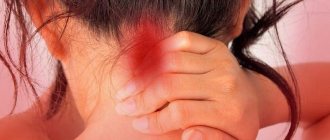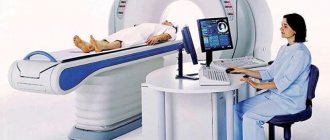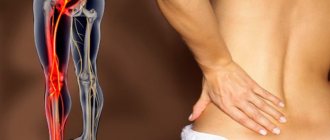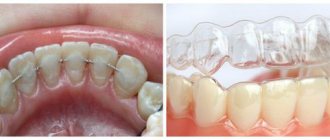The balance of the torso ensures the balance of the body. The body does a lot of work to maintain balance. The brain uses many sources of information to determine where the body is located in relation to the outside world and allow the body to function. Sensory information from the eyes, ears, and proprioceptors in the torso help the torso stay upright and perform coordinated movements.
Information from the vestibular apparatus in the inner ear and visual information from the eyes, information about body position from proprioceptors from the torso through the spinal cord enters the cerebellar lobes located at the base of the brain. The cerebellum uses this information to maintain posture, coordinated body movements such as walking, and fine motor coordination such as using a pen to write.
Vertigo, a feeling of rotation of the torso, sometimes accompanied by nausea, appears when there is a malfunction in the balance system. However, people also prefer not to use this word to describe symptoms, often using terms such as dizziness and lightheadedness. And it’s up to the doctor to determine how to identify the patient’s symptoms.
Dizziness is a symptom that is difficult to describe and can be broadly divided into lightheadedness and dizziness itself. Lightheadedness is a feeling where a person experiences a sensation of incipient loss of consciousness, while dizziness is most often described as a spinning sensation with the body losing balance. And therefore, the doctor needs to determine whether the feeling of lightheadedness is a sign of cerebral hypoxia, which can occur as a result of cardiovascular diseases (rhythm disturbances), dehydration or circulatory problems in the brain. Dizziness provides the prerequisites for searching for neurological problems or problems in the middle ear.
The most important point when helping a patient with dizziness is to differentiate his sensations. Dizziness is a pathological sensation that is described by a person as a feeling that he himself is spinning or the things around him are spinning around him. Most often this is due to problems in the inner ear.
The inner ear has two parts, the semicircular canals and the vestibule, which help the body understand where it is in relation to gravity. There are three semicircular canals, which are at right angles to each other and are essentially a gyroscope for the body. The canals are filled with fluid and lined with a membrane that is encrusted with nerve receptors that transmit information to the cerebellum (the part of the brain responsible for balance and coordination). The cerebellum adds to the information received from these receptors information from proprioceptors from the muscles of the trunk, and this summarized information helps the brain understand how the body is located in relation to gravity and the surrounding world.
Typically, when the head moves, the fluid in the semicircular canals also moves and this information is transmitted to the brain. When the head stops moving, fluid movement also stops. Sometimes there are prerequisites for a delay in the synchronous cessation of fluid movement, which is what causes dizziness (for example, when spinning on a carousel or during children's games). When a person rotates on a carousel, the fluid in the internal channels gains a certain inertia and continues to move, even when the head has stopped rotating. It causes dizziness and can cause a person to fall, trip, or stagger. This may also be accompanied by vomiting.
In patients, dizziness may occur when fluid is inflamed or crystals on the nerve membrane that lines the walls of the semicircular canals are irritated, and this can cause a sensation of spinning without moving the head. . Often, one channel will be involved and the person will have no symptoms as long as they do not move.
Causes and course of the disease
Currently, not much is known about the causes of Meniere's disease.
All currently known causes of Meniere's disease can be divided into local, which relate directly to the middle and inner ear, and general, which relate to various pathologies of the whole organism as a whole. Local reasons include:
- dysfunction of the endolymphatic duct - a channel that extends from the labyrinth towards the temporal bone and is a blindly ending duct;
- formation of new vessels inside the endolymphatic sac;
- reduction in size and closure of the vestibular aqueduct (canal in the inner ear);
- reduction in the number of air cavities (cells) in the temporal bone.
Common reasons include:
- circulatory disorders;
- violation of water-salt balance in the body;
- allergic reactions to various compounds;
- hormonal disorders.
Meniere's disease is based on vascular spasm or dilatation, as well as their weak and permeable walls. As a result, the inner ear swells and begins to put pressure on the walls of the labyrinth. In turn, disturbances occur in the labyrinthine fluid at the biochemical level.
As a result, all components of the inner ear expand and increase in size. Due to the increase in fluid volume, the labyrinth stretches, the internal elements of the ear are displaced or damaged. This problem also includes a violation of vascular autonomics, controlled by the central nervous system.
Causes
While there are many causes of dizziness, the main difference is between central causes of dizziness and peripheral ones. The central causes occur due to disturbances in the functioning of the cerebellum.
Distinguishing between central and peripheral causes is important in assessing neurological problems. The brain and spinal cord make up the central nervous system, while the peripheral nervous system includes nerves outside the central nervous system. Sometimes it is easy to tell the difference, other times it can be difficult to know which part of the nervous system is involved. For example, if a person injures his elbow and experiences pain and numbness in his arm, it is primarily due to direct injury to the ulnar nerve. This is a peripheral nerve problem and most people do not seek medical help. If, for example, the leg becomes weak and numb, then the cause may be either central (cerebral stroke) or peripheral (nerve compression).
Our orientation in the surrounding space and, accordingly, balancing and balance is determined by three sensory systems:
- Ocular (visual) system
- Balance (vestibular) system of the inner ear
- General sensory system including movement, pressure sense, and proprioception in joints, muscles, and skin.
These three systems continuously provide information to the brain stem and brain about our position in the surrounding space and to gravity. The brain stem connects the brain to the spinal cord. The brain, in turn, processes this data and uses the information to make changes in the position of the head, body, joints, and eyes. When all three sensory systems and the brain are functioning properly, the final result of this activity is normal body balance.
Visual information shows the brain where the body is in the surrounding space, where it is headed, what direction it is moving, turning, or where it has stopped. Simple tasks like walking and picking things up are much easier if we can see our environment. Seasickness is associated with a disruption in the relationship between visual information and vestibular information from the middle ear. When rocking on the water, the vestibular system tells a person that there is movement, while the eyes can only see part of the cabin. Similar things happen with eye diseases (such as glaucoma or cataracts) - and this also leads to an imbalance in the body.
Vestibular system.
The inner ear, or labyrinth, is located deep within the ear in the middle ear, and is enclosed in a membrane within the petrous portion of the temporal bone of the skull. The middle ear includes the eardrum and three tiny bones for hearing. The bones are called the malleus, incus, and stapes, and these names reflect their shape. The middle ear is connected to the back wall of the pharynx by the auditory tube (Eustachian tube). The inner ear (labyrinth) contains the semicircular canals and the vestibule, which perform the function of balance, and the cochlea, necessary for hearing. The vestibular structures of the inner ear are the vestibule, which consists of the utricle and sac, and three semicircular canals. These structures perform a job similar to that performed by a carpenter in leveling the surface of both vertical and horizontal levels, that is, the function of a gyroscope. They send information through the vestibulocochlear nerve to the cerebellum, the part of the brain that processes information about body balance and position in space. The rest of the inner ear, the cochlea, is responsible for the hearing process.
The vestibular system measures linear and rotational motion. Many conditions can cause this system to malfunction or transmit incorrect information to the brain. These conditions include Meniere's syndrome, labyrinthitis, benign paroxysmal positional vertigo, ear infections, tumors, or trauma. Peripheral Sensory System The sensory system consists of motion, position, and pressure receptors in the skin, muscles, and joints. These receptors provide important information about touch and position and help maintain balance. For example, if someone pushes you from behind, there is a slight increase in receptor activity at the base of your feet. As these receptors detect increased pressure, the brain receives information (based on experience) that the body is moving. The brain then uses this information to instruct the body to shift a small amount of weight back to prevent the body from falling forward.
Brain
The brain processes information from three sensory systems. Any problem that alters the normal functioning of the central nervous system can lead to an imbalance in the body. Unlike problems associated with the three sensory input systems discussed above, with problems in the central nervous system itself, dizziness is not the only symptom. Thus, the most common cause of dizziness is peripheral problems associated with the inner ear or labyrinth.
The most common causes of dizziness:
- Benign paroxysmal positional vertigo (BPPV) can be caused when crystals in the inner ear become dislodged and irritate the semicircular canals. The cause of this is not precisely determined, but it is associated with incorrect position or movement of the head. This type of dizziness is most common in people over 60 years of age.
- Labyrinthitis can occur after a viral infection that causes inflammation of the middle ear.
- Meniere's disease is a symptom complex consisting of dizziness, hearing loss, noise or ringing in the ears.
- Acoustic neuroma is a benign tumor of the ear that can cause dizziness.
- Trauma to the inner ear can have different mechanisms of development. When the base of the skull is fractured, there may be direct damage to the labyrinth or due to contusion upon impact, which vectorially causes displacement of the otoliths and this can lead to dizziness.
- The inner ear can also be damaged by barotrauma - that is, injury caused by a sudden change in pressure - and this can cause dizziness. This type of injury occurs when diving into water, when the air remaining in the external passage is sharply compressed and damages the eardrum. Barotrauma can also occur as a consequence of scuba diving, where the increase in air pressure within the middle and inner ear can lead to damage to both the membrane and the structures of the inner ear. This can cause hearing loss if the eardrum has ruptured or can cause dizziness if the round and oval windows in the inner ear are damaged.
- Central causes of dizziness, which originate in the brain, are much less common. Strokes, tumors, seizures, and multiple sclerosis can cause dizziness.
- Vestibular migraines refer to migraine headaches associated with dizziness and are often the cause of balance problems. Migraine is a vascular disease characterized by periodic, usually unilateral, headaches. These headaches are often preceded by neurological symptoms for a period of time called an aura. Dizziness may occur in migraine patients as part of a migraine aura or separately. In young patients, dizziness may precede the onset of headaches. Migraines often have a genetic basis, and a family history may be a clue that an imbalance may be associated with migraines.
Clinical picture
Meniere's disease occurs in several stages.
Initial stage. Periodically, the patient experiences tinnitus and a feeling of ear fullness. Then there comes a feeling of swelling inside the ear, and, as a result, the patient feels constant pressure on it. If treatment is not undertaken, then a picture of sensorineural hearing loss develops, a disease in which the auditory nerve is affected and hearing loss occurs. In addition, due to an increase in intralabyrinthine pressure, dizziness and vomiting begin to bother, which can last for several hours, with intense hearing loss. But these are the most initial and weakest manifestations of the disease.
Second stage. Dizziness and vomiting become frequent and occur in the form of attacks, during which significant hearing loss constantly occurs. But in the second stage, the hearing loss is persistent and after the end of the attack, hearing is not restored to the original level. The same goes for noise and ringing in the ears. In the second stage, tinnitus and a feeling of fullness do not occur periodically, but are constantly present.
Stage three: For those who do not take any steps to treat, Meniere's disease becomes irreversible. Dizziness and vomiting will no longer be observed, and upon examination, it will be impossible to detect fluid inside the labyrinth. However, hearing will be progressively lost, and it will no longer be possible to restore it. Hearing loss occurs as a type of sensorineural hearing loss. As a result of irreversible changes in the labyrinth, stability and firmness of gait are lost, which can no longer be restored.
Types of ear inflammation
The inflammatory process can occur in any of the mentioned parts of the human ear. Therefore, there are several types of otitis media, which differ in location and degree of inflammation.
Otitis externa
This type of ear inflammation mostly affects swimmers or older people. Inflammation begins to develop as a result of mechanical trauma to the auricle or ear canal. When damaged, pathogenic microorganisms enter the outer ear and begin to multiply, and a boil forms in their place. Sometimes there is redness of the ear canal.
Otitis media
With otitis media, the inflammatory process spreads to the tympanic cavity, auditory tube and mastoid process. Most often occurs in children under 5 years of age. Otitis media of the ear can be caused by viruses, bacteria, and fungi. With colds, the patency of the Eustachian tube (connects the tympanic cavity to the pharynx) is disrupted. As a result, the pressure in the tympanic cavity changes, and inflammatory fluid begins to be actively produced. Otitis media can develop into a catarrhal or purulent form.
Catarrhal otitis is a complication of acute respiratory infections or acute respiratory viral infections and can reduce hearing and cause tinnitus. If the disease is not treated, it will begin to manifest itself with increased body temperature and severe pain in the ear. The advanced catarrhal form develops into purulent otitis media. The form of the disease is accompanied by a rupture of the eardrum and the release of pus from the ear canal. If the eardrum is strong, an operation is required to puncture it. This procedure is carried out using local anesthesia and only by a specialist. Purulent otitis media in a child may appear before the age of 5 years due to weak immunity and frequent colds.
Another form of inflammation of the middle ear is exudative otitis media. It is characterized by the appearance of mucous fluid in the ear cavity, which leads to noise and pressure in the ears. The condition can lead to hearing loss if left untreated.
Acute otitis media
Inflammatory processes in the middle ear can occur in an acute form, when the disease affects the tympanic cavity of the ear, the Eustachian tube and the mastoid process. Acute otitis media occurs if treatment was initially selected incorrectly or was carried out late. After 2-3 days, the eardrum ruptures and the pus formed inside the ear flows out. After this, the patient's condition improves significantly, and the membrane heals over time without changing the quality of hearing. The danger of the acute form is that pus can spread into the cranial cavity, leading to the development of a brain abscess or meningitis.
Internal otitis
In this case, harmful microorganisms penetrate deep into the ear and affect the vestibular apparatus. Not timely treatment can cause the development of labyrinthitis. Otitis interna causes dizziness, nausea, or even loss of balance.
Chronic otitis media
With chronic otitis media, a hole forms in the eardrum, from which pus is discharged from time to time. This form of pathology occurs due to repeated inflammation of the tympanic cavity, and the causes of the development of the disease are infections or mechanical damage to the ear. In the chronic form, patients note periodic leakage of pus from the ear, tinnitus and occasionally dizziness.
Diagnostics
Meniere's disease consists of several stages.
- The patient's complaints of systematic dizziness and poor health are carefully studied, and when examining the labyrinth (additional research), the otolaryngologist discovers swelling of the walls of the inner ear and accumulation of fluid inside the labyrinth (endolymphatic hydrops).
- A caloric test is performed - this is a study of the vestibular apparatus. The doctor evaluates involuntary eye movements (nystagmus) by pouring water into the ear, or by exposing the eardrum to cold and hot air, thereby irritating it.
- Also, the ENT doctor should send the patient an additional test - MRI (magnetic resonance imaging) of the brain and temporal bones, which is a very informative study for this disease;
- Among additional methods, it is necessary to examine hormonal levels, levels and possible metabolic disorders;
- Instrumental research methods include otoscopy and videotomicroscopy - examination of the external auditory canal and eardrum using an otoscope and a diagnostic ear microscope.
Thus, the otolaryngologist conducts not only an examination of the ear, but also other organs and body functions in order to exclude other diseases. Among them there may be many diseases of the nervous system, which are also characterized by dizziness and other disorders of the vestibular system. These are diseases such as acoustic neuroma, leptomeningitis of the cerebellopontine triangle, specific labyrinthitis and other forms of labyrinthitis.
Friends! Timely and correct treatment will ensure you a speedy recovery!
In addition, when diagnosing Meniere's disease, the otolaryngologist determines the stage of the disease and the degree of hearing impairment.
Treatment
Treatment for Meniere's disease is as follows:
- Intravenous drips with 5-7% sodium bicarbonate, 100-150 ml. The speed should be quite high - about 120 drops per minute (the norm is 1 drop per 1 second.) The number of such droppers can vary from 1 to 15, depending on the severity of the condition and the stage of the disease.
- Taking B vitamins, as well as Aevita (vitamins A and E), Belloid (ergot alkaloids) and Bellataminal, which is a sedative.
- A 20 ml Glucose solution can be injected intravenously in a slow stream. The number of intravenous infusions will depend on the severity of the patient’s condition and the stage of the disease at which he presented.
- Since attacks of Meniere's disease are associated with dizziness and an unstable, shaky gait, during them it is necessary to maintain complete rest and inject a subcutaneous solution of atropine sulfate in the dosage prescribed by the ENT doctor.
- Reflexotherapy is also used to treat Meniere's disease: acupuncture massage, electro-apuncture, magnetic apuncture and other types of acupressure on certain areas of the human body.
- If drug treatment and reflexology do not bring the desired results (which happens only in rare cases), then treatment of Meniere's disease is carried out by surgical intervention in the labyrinth located in the inner ear of a person. It must be carried out in an ENT hospital, followed by a mandatory rehabilitation period.
Internal causes of ear pain
Acute, shooting pain in the ear most often occurs for reasons such as:
- Otitis media is the most common cause of ear pain. Depending on the place where the infection has penetrated, there are external, middle and internal otitis. They may cause throbbing pain in the ear, the eardrum may become inflamed and even rupture, discharge from the ear may appear, and the temperature may rise. Symptoms of internal otitis include headaches and dizziness, deterioration in coordination of movements. Inflammation can occur in an acute form (with an increase in body temperature) or chronic (the patient complains of general weakness, the pain is weak or absent). Otitis is dangerous due to hearing impairment and prolonged course, so you should not ignore them.
- Perichondritis is another ear infection that develops, most often from an ear injury or as a complication from the flu. The main symptoms of perichondritis are swelling of the skin of the ear, enlargement of the ear in size, purulent discharge, and fistulas that do not heal for a long time.
- Mastoiditis is a complication of otitis media; in this case, the process of the temporal bone behind the ear becomes inflamed, and purulent cavities can form.
- Boils are ulcers on the ear or in the ear canal.
- Shingles or herpes, which can also appear on the ear.
- Tumors of various types that compress the auditory tube.
There is also secondary pain in the ear - without a cause directly in it. Problems arise in other ENT organs (throat, nose, sinuses) or neighboring areas on the head: lymph nodes, jaw, facial nerves.
The main causes of pain in the ear area:
- Lymphadenitis is inflammation of the lymph nodes that are located near the ears.
- Dental diseases – pulpitis, periodontitis and others.
- Injury or inflammation of the temporomandibular joint.
- Pathologies of the upper vertebrae of the neck.
- Neuralgia of the occipital or trigeminal nerve (in this case there is unilateral pain in the right or left ear).
- Infections and other diseases of the throat, nose and its appendages, oral mucosa and even the esophagus. This pain appears in the ear when swallowing, chewing, or may be constant.
- Tumors in the head, neck.
- Injuries.
Prevention
Due to the unclear etiology of Meniere's disease, its prevention is almost impossible.
However, in some cases, measures to prevent the disease can still be taken. This:
- quitting smoking, which leads to poor circulation and hypoxia of the whole body;
- the use of personal protective equipment when riding a motorcycle or bicycle (helmet, motorcycle and bicycle helmet) in order to avoid traumatic brain injuries, which in some cases can cause the development of Meniere's disease.
- to reduce the number of attacks of dizziness, nausea and vomiting, it is necessary to adhere to a special diet that is low in salt and fluid.
Of course, one of the main measures to prevent the development of Meniere’s disease and its entry into the stage of irreversible changes is a timely visit to an ENT doctor at the first symptoms of hearing loss and signs of dizziness.
Make an appointment right now!
Call us by phone or use the feedback form
Sign up











